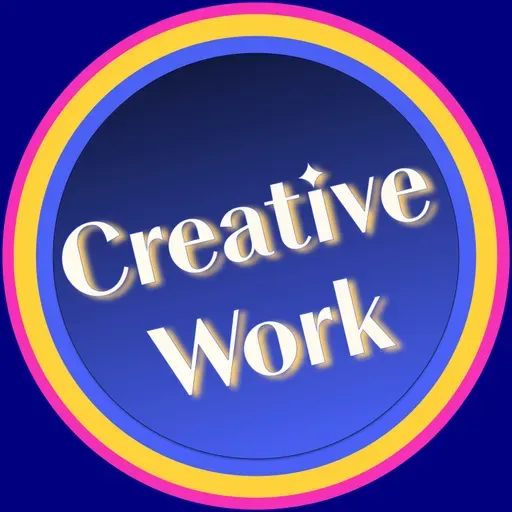
Episode 68: How Do You Future-Proof Your Creative Work?
In this episode, the team explores what “future-proofing” creative work really means across personal practice, communities, and businesses. The conversation touches on resilience during downtime, continuity planning, IP protection, using AI for idea formation, and building systems that sustain a community beyond a single person’s energy or presence. The group doesn’t claim to solve the problem; instead, they frame it as an ongoing project that needs both prevention and continuity thinking—like an insurance policy for creative initiatives.
Episode Highlights
Future-proofing isn’t one-size-fits-all. It looks different for personal creativity, solopreneurs, small businesses, and community builders.
Continuity matters: keys, access, roles, documentation, and training enable creative work to continue when the founder or key people step back.
AI can serve as a bridge from fuzzy, pre-verbal ideas to actionable plans and language.
Protecting intellectual property is more complex today; due diligence, timing, and practicality are critical.
Legacy and succession: involving family or trusted members can extend a body of work; blockchain publishing can provide evergreen access.
Sustainability over volume: running 3,000+ sessions is impressive, but the real goal is building a flywheel that doesn’t depend on one person.
Key Quotes and Takeaways (by participant)
Alessandra
Quote: “We’ve done this for more than 3,000 sessions… What’s more important than the number of sessions… is that it be sustainable.”
Takeaway: She recognizes the absence of a flywheel and the need for a continuity plan that allows the founder to take extended breaks without breaking the community rhythm.
Observation: The push to run daily sessions has constrained her ability to pursue her own creative work; she’s reframing the operating model to include planned breaks and resilience.
Greg
Quote: “Making sure that there’s key players in responsible positions that have the keys to the store…”
Takeaway: He emphasizes practical continuity: access, roles, partnerships, and promotion—especially when fatigue and health challenges reduce capacity.
Observation: Suggests building in public as a group project (podcast + blog series) to actively design a future-proofing framework.
Jennifer N
Quote: “I approach it three different ways: personal curiosity, business continuity with my sons, and community legacy.”
Takeaway: A three-tier model—personal curiosity fuels creativity, succession planning inside the business, and preserving community work so it can outlive the founder.
Observation: Shares a powerful legacy example: Todd Cochran’s sons continuing his podcast, highlighting how continuity can carry a voice forward.
Shadows Pub
Quote: “If I should get sick… do I keep things afloat enough to return or don’t I?”
Takeaway: Practical questions of access, maintenance, and succession (e.g., a niece) frame future-proofing as both temporary absence planning and end-of-life planning.
Observation: Interest and access are prerequisites; continuity requires someone willing and able to step in.
Bobby W
Quote: “You take what you know and incorporate new tools… that AI bridge… can take your same ideas, add the nuances of today, and get you where you want to be.”
Takeaway: Uses AI to translate nascent, pre-verbal ideas into coherent language and plans, helping keep pace with rapid change.
Observation: “Pre-verbal prompting” helps clarify ideas before they’re fully formed, making them easier to develop and execute.
Bobby B
Quote: “When I think of future-proofing, I go to protect the content that I have uniquely constructed.”
Takeaway: Focuses on IP protection and due diligence, acknowledging today’s heightened vulnerability and shifting rules.
Observation: Timing and maturation matter; even unusual names can be preemptively registered by major players, complicating protection.
Main Points
Define future-proofing by context:
Personal: keep curiosity alive, maintain energy and routines that support creativity.
Business: succession planning, documentation, and shared ownership of key operations.
Community: build a flywheel that doesn’t rely on a single person; architect breaks and coverage.
Continuity components:
Clear roles and backups
Access to tools, platforms, and “keys”
Documentation and SOPs
Training/onboarding pathways
AI as a partner:
Use AI to translate fuzzy ideas into structured plans and language.
Rapid iteration can speed adaptation to new business realities.
IP realities:
First-to-market and first-to-protection still matter, but the landscape is more competitive and faster.
Conduct deeper due diligence and be realistic about what’s protectable.
Legacy options:
Family or trusted colleagues can step in to continue work.
Publish on resilient platforms (e.g., blockchain) to ensure evergreen accessibility.
Sustainability > volume:
Daily cadence is impressive, but future-proofing means engineering breaks and coverage so the work persists without burnout.
Suggested Actions (for Creative Work Hour and similar communities)
Run a dedicated session focused on designing the community’s “insurance policy.”
Identify critical roles and name backups; document access (passwords, accounts, permissions).
Create a minimal SOP library (host workflow, comms, scheduling, promotion, handling absences).
Pilot scheduled breaks with rotating hosts; measure engagement and refine.
Start a build-in-public series:
Podcast mini-series + blog posts documenting the future-proofing project
Share templates and lessons learned
Explore AI for idea formation:
Use prompts to clarify pre-verbal ideas into topics, formats, and scripts.
Review IP strategy:
Audit what should be protected and what’s better open/shared; perform updated searches before filing.
Closing Thought
Future-proofing is less about predicting the future and more about designing resilience: shared ownership, documented processes, flexible cadences, and tools that turn ideas into action—so the creative work continues, even when life demands a pause.